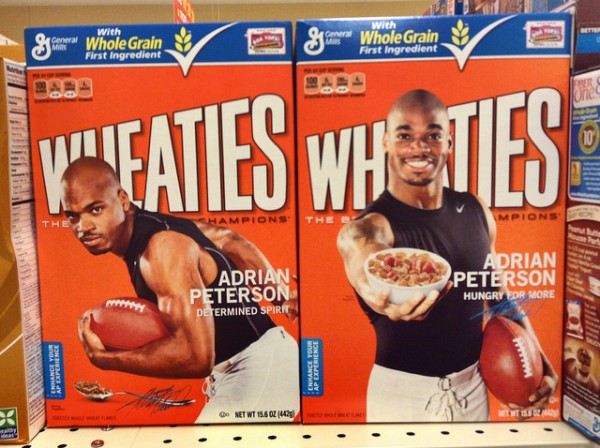Cereal Box Characters Designed to Make Eye Contact

You're not losing your mind. Cereal box characters really are trying to make eye contact with you, according to a recent study.
The study, which was conducted by the Cornell University Food and Brand Lab, investigated advertising strategies adapted by popular cereal box brands to earn a consumer's attention and even trust.
According to the Cornell research team, cereal box characters are designed to appear to be making eye contact with the intended consumer. Adult cereal boxes, for instance, are traditionally placed on eye-level shelves in a grocery store and feature characters that stare straight ahead. Kid's cereals however, have been found to be on traditionally lower shelves and feature characters that look downward at a 9.6 degree angle so that they are more likely to meet the gaze of children.
The researchers determined this after analyzing the front illustrations of 65 different cereal brands from ten different grocery stores. Each box's spokes-character was assessed by the angle of its gaze, four feet from the shelf -- which is theorized to be the average distance shopper's stand from shelves.
The results of this analysis showed that child-brand characters -- such as the Trix rabbit -- were designed to make eye contact with young children, while adult brand characters -- such as a Wheaties box athlete -- were designed to meet the gaze of shoppers with a friendly smile.
If that's not creepy enough, the research team then moved on to see how influential this "eye contact" is on the average person's shopping. According to a Cornel University press release, the researchers showed 63 people pictures of a Trix cereal box, featuring the brand's familiar white rabbit.
The participants were randomly chosen to see either a rabbit that looked straight at them or a rabbit that looked slightly downward. Afterwards, they were asked questions about the brand designed to expose feelings of trust or a connection with the brand.
According to the results, eye contact with the Trix rabbit resulted in participants reporting a 16 percent higher likelihood to trust the brand and a 28 percent more intense feeling of connection with the brand, compared to the feelings of the participants who saw a rabbit that did not make eye contact.
Researchers theories that eye contact is then essential to earning long-time brand trust from childhood on.
The research is slated to be published in the peer-reviewed scientific journal Environment & Behavior sometime in the near future.
It is recommended that these results be viewed as preliminary findings until the scheduled publication.
A Cornell University press release detailing the study was published this April.
Apr 04, 2014 03:12 PM EDT





